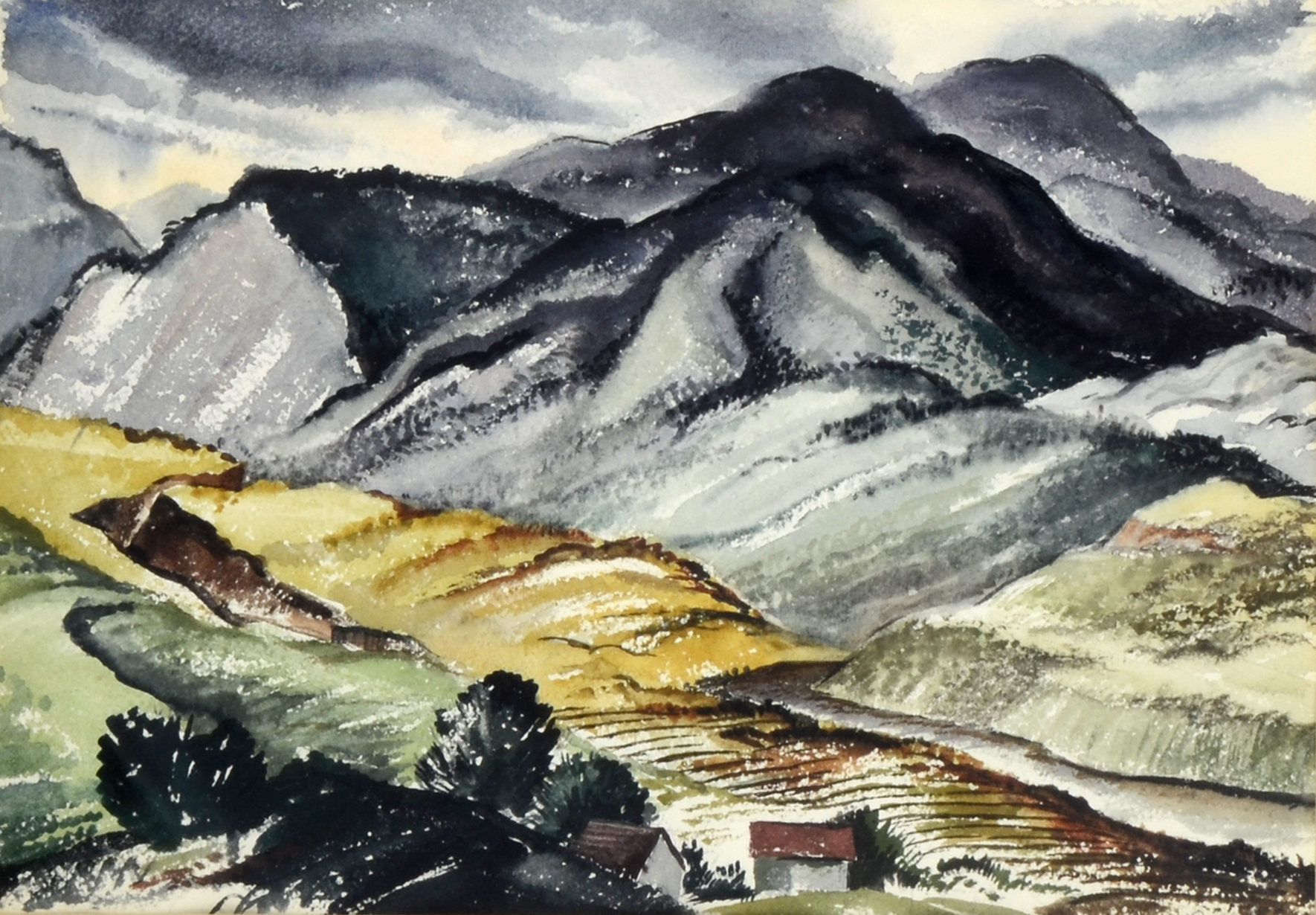Lucy McGowan Diecks (1907-1998)

Woman with Church Steeple
oil on board
24 x 20 inches
28 x 24.5 inches with frame
$1250

Western Landscape
watercolor
signed l.r.
10 1/2 x 15 inches (sight)
$250
“Woman with Church Steeple” is a 1950 painting by Louisville artist Lucy McGowan Diecks. Miss Diecks was being honored by her artistic endeavors as young as 16 and studied at the Corcoran School of the Arts & Design in Washington, D.C., at 17.
She returned to Louisville to begin her 30-year career teaching art at Atherton High School, then the J.M. Atherton High School for Girls on Morton Avenue. She also taught at the Art Center School in the evenings. Miss Diecks was an active and influential member of the Louisville arts community. Her work was frequently accepted in the annual exhibits of Kentucky and Southern Indiana artists, Louisville Woman’s Club shows, Art Center faculty shows, the Kentucky State Fair and many other venues over the years. The now-defunct TriArt Gallery in Louisville held a retrospective of her career in 1997.